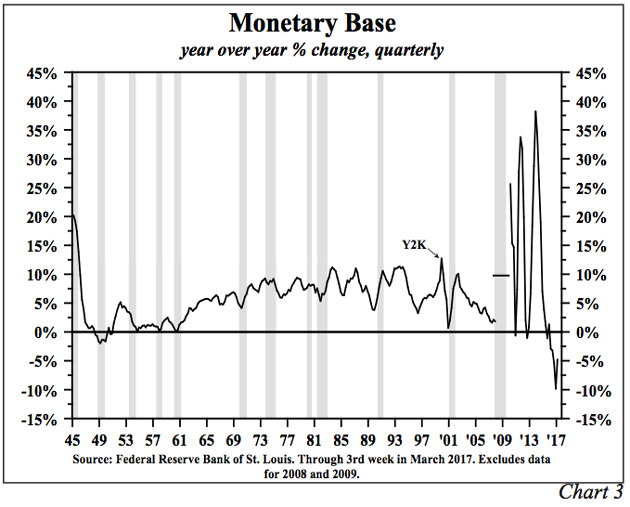The Affordable Care Act (ACA), better known as “ObamaCare,” was signed into law on March 23, 2010, with most of its provisions going into effect on January 1, 2014. Over the past three years, despite billions of dollars in back-end subsidies to the insurance industry, major insurers have been losing money on ACA plans and abandoning state exchanges.
Centers for Medicare and Medicaid Services (CMS) reported that for ObamaCare’s second benefit year (2015), it would need to make “$7.8 billion in reinsurance payments to 497 of the 575 participating issuers nationwide,” due to contribution deficits versus payment requests within the industry (Kaiser Foundation Aug 17, 2016).
Insurance companies went on to lose approximately $2 billion on the exchanges in 2016. United Healthcare, one of the largest insurers in America, anticipated an $850 million loss and announced plans to pull out of 27 of the 34 plans where it had been offering coverage. Rivals Aetna, Anthem, and Humana each projected $300 million in ACA plan losses, with Aetna bailing out from 11 of the 15 states where it had been offering coverage (Bloomberg, Aug 17, 2016).
Cooperative health insurers like CoOportunity Health (Iowa, Nebraska), created with federal dollars under the ACA, began collapsing in 2015, rolling across the country from New York to Oregon. By August 2016, only seven of the original 23 co-ops were still operational (Forbes, Oct 29, 2015).
Healthcare premiums for consumers have been rising at double digit percentages for the past four years. ObamaCare’s 2017 rate increases, finalized in October 2016, included an average cost increase of 25% nationally (Kaiser Family Foundation). The 10 hardest hit states are seeing premium increases average in at “62% while Arizona is officially the biggest loser with rates in Phoenix soaring 145%.”
Over a million middle class Americans have dropped coverage each of the past two years due to burdensome price increases and skyrocketing deductibles. “ObamaCare, according to the liberal New York Times (Oct 2, 2016), is “too expensive and inaccessible.”
Healthcare providers and institutions are being squeezed hard by ObamaCare penalties and reduced payment rates. Physicians have been negatively impacted by reimbursement cuts, and ObamaCare’s non-clinical burdens and paperwork have forced many medical professionals into spending more of their precious time responding to the federal bureaucracy and less time with patients (CNN Jan 17, 2017).
A recent analysis by the Kaiser Foundation (Mar 10, 2017) estimated that 79% of hospitals in the U.S. will be hit with ObamaCare penalties totaling over a half billion dollars in fiscal 2017.
Finally, the sheer magnitude of ObamaCare’s administrative costs have been stunning.
Federal government data for establishing and operating the ACA exchanges included “costs to the federal government of operating the federally-run exchanges, federal grants to states to establish their own exchanges or for expenses relating to coordinating with a federally-run exchange, and CMS’ administrative costs related to those grants.”
In the ACA roll-out year, 2014, “The total federal cost for the ACA exchange program was $9.75 billion to enroll 6.34 million people,” a per capita administrative cost of “$1,539 for the federal government, excluding administrative costs to the insurers for enrolling and serving those individuals.” The federal administrative cost for “merely establishing the exchanges to obtain enrollees” was therefore “more than triple the total administrative cost ($414) to insurers of both enrolling and providing coverage for individuals prior to the establishment of ACA exchanges” (American Action Forum Dec 31, 2016).
Obamacare is further expected to add a massive “$273.6 billion in additional insurance overhead… an average of $1,375 per newly insured person, per year, from 2012 through 2022” (Health Affairs Blog, May 27, 2015). This overhead bonanza represents “a whopping 22.5 percent of the total estimated $2.76 trillion in all federal government spending” for the ACA during that period, according to the report’s authors.
ObamaCare is not sustainable. America needs a fresh new start in healthcare.
Congress must develop a ‘citizen-centered’ replacement model which maximizes quality and accessibility for the greatest number of Americans. This model should redirect the hundreds of billions of dollars wasted in administrative overhang into individual Medical Savings Accounts (MSAs) for citizens to allocate directly for personal healthcare needs, specifically routine primary care and outpatient services.
The hundreds of millions of healthcare transactions each month for primary care, prescriptions, and other services should ‘not’ be run through a big-government, bloat-heavy, labyrinthine system. Routine expenditures can, and should, appropriate ‘direct-pay’ corridors.
The U.S. Health Care Freedom Plan offers a comprehensive new dynamic to meet those ends. It improves access and affordability and reestablishes genuine patient-provider relationships.
It comes with an added benefit: “If you like your ObamaCare, you can keep your ObamaCare.” Every other U.S. citizen will receive an ACA exemption and $25,000 in a qualified MSA.
The U.S. Health Care Freedom Plan honors the counsel of Buckminster Fuller: “You never change things by fighting the existing reality. To change something, build a new model that makes the existing model obsolete.”
………………………………………..




